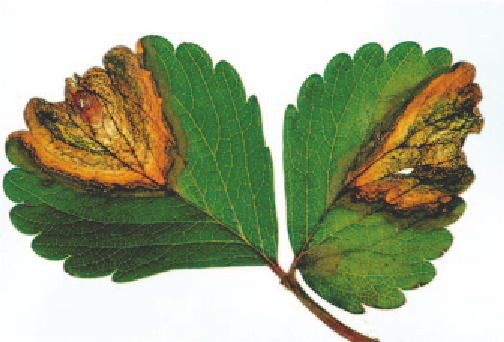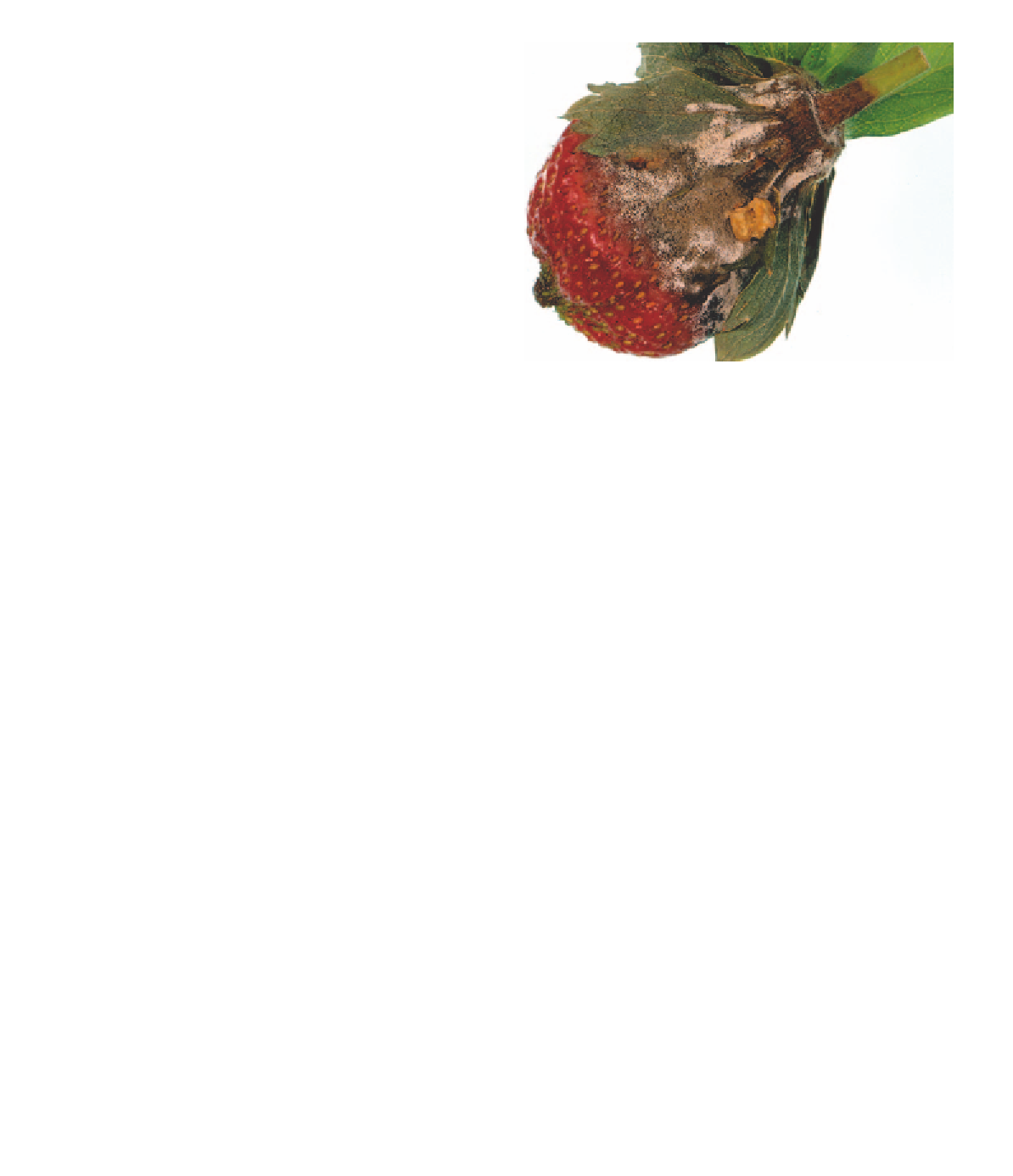Agriculture Reference
In-Depth Information
Fig 18.21 Typical symptoms of Gnomonia leaf blotch on strawberry
leaves.
Fig 18.22 Advanced grey mould. White growth occurs under moist
conditions and grey velvety growth develops under dry conditions.
Source of infection and spread
The fungus can enter the internal vascular tissues of the
plant. It is likely that the fungus is spread in this manner
from runner-production areas to field plantings.
The disease may be expressed first in runners as a leaf
spot developing soon after planting. This becomes an
early source of secondary inoculum for the new crop.
Once established in a crop, it is readily spread by water
splash during warm, humid conditions. The disease
overwinters in ratoon crops and undecomposed plant
material.
becomes brown and rotten. During moist weather, a grey,
powdery growth develops on affected areas. With time,
berries dry out and harden. Black resting bodies (sclerotia)
may also form.
Source of infection and spread
The fungus is a common inhabitant of dead or dying plant
material. Large numbers of spores are produced and spread
by wind and rain. These germinate on dead f flowers or leaves
and penetrate fruit. The fungus readily infects fruit in contact
with wet soil. Cool, moist weather favours the disease.
Importance
The disease may be common and serious in crops established
with infected runners and in cold wet weather.
Importance
The disease can cause major losses of fruit if a
recommended spray program is not used.
Management
•
Spray at-risk crops from planting with recommended
fungicides. Fungicides currently available must be
applied early and regularly to control the disease. In
extended wet weather, good management is diffi cult
to achieve.
Management
•
Use the recommended protectant fungicide from the
onset of fl owering until harvest. When a disease event
occurs (two days of wet, cool weather), use a specifi c grey
mould fungicide.
Avoid growing strawberries in the same ground two years
in a row.
Plant on polythene mulch to prevent fruit touching
the soil.
•
•
Remove diseased berries and dead leaves from the crops
and burn them.
•
GREY MOULD
■
Place berries in a coolroom as soon as possible after
harvest.
•
Cause
The fungus
Botrytis cinerea
.
Do not plant too closely, so developing fruit can dry more
rapidly.
•
Symptoms
On fruit, light brown spots with indefinite margins
develop, increasing rapidly in size until the whole fruit
Do not over-fertilise plants; shading by thick foliage stops
berries from drying rapidly.
•












